It’ll be a big mistake if I don’t mention Malaysian drinks when talking about the diversified Malaysian culture. Almost all these iconic drinks are inexpensive, effortless to make, and appear in local hangouts, including cafes, food courts, restaurants, etc.
Although these drinks are irresistible, some may find them too sweet to enjoy. Therefore, I will give you all the needed recipes, and you can freely adjust the sweet level as you wish.
Besides, you can enjoy these fabulous drinks after finishing your meal with unique Malaysian delicacies. They’re an indispensable duo that will blow you up in the second.

3 Awesome Drinks That Contain Alcohol To Rock Up The Parties
I will start the list with some liquor to arouse a day and swing your mood. The alcohol section has three drinks, but less is more. They all reach wonderful uniqueness and deliciousness!
1. Tuak (Palm Wine)
Alcoholic
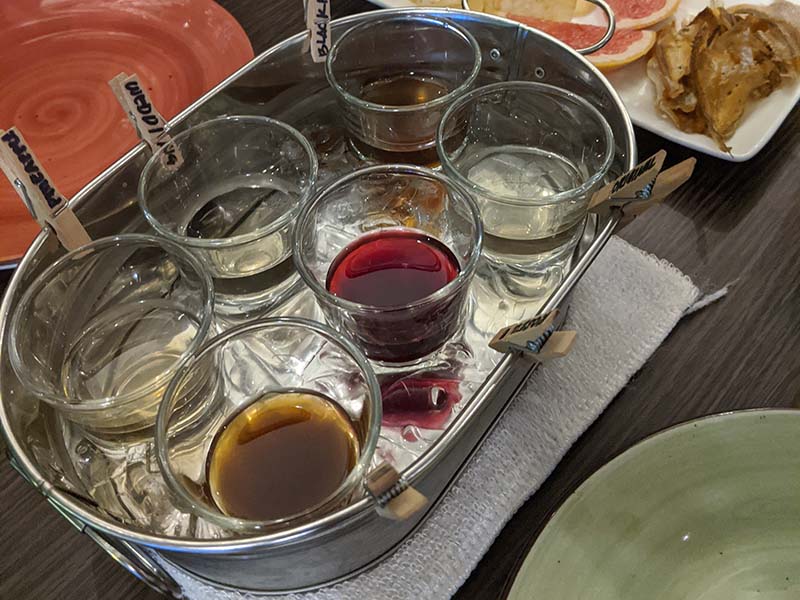
Wine extracted straight from the tree? Palm wine will be an excellent example!
Palm wine, a type of booze, has one of the most unique and fabulous making processes that I’ve ever seen before. This wine is dominant in some corners of the world, including Southeast Asia, South Asia, the Caribbean, South America, and Micronesia.
In Malaysia, people usually call this drink “Tuak”. Regarding the origin of Tuak, in 1886, the British brought Indian immigrants (Tamil and Keralan) due to a labor shortage in the Malaysian Peninsula.
After the laborers finished the tapping trees process in rubber plantations, they would enjoy palm wine as an activity to connect people with people.
Palm wine is usually produced by traditional farmers or smallholders. That said, palm trees are considered the main livelihood for some households. And as you don’t know, this plant creates a stable and valuable cash flow more than selling timber.
This wine is made of the sap of different creatures inside the palm trees, including palmyra, date palms, and coconut palms. This palm tree sap is still a sweet liquid until the fermented stage.
Malaysians will leave a cut on an unopened fruit flower to let the white sap dribbled into the bottle they prepared before. Another way is that you can cut down the whole palm tree, and you will need heat from a fire to encourage the liquid to come out.
After the dribbling part is finished, palm sap will gradually become an alcoholic drink as time goes by. For example, if you leave it to chill for 2 hours, you will achieve the fluid with 4% alcohol. Also, you can cut some fresh chilies and onions to make the wine more interesting!
Where to buy: You can buy palm wine at the markets or some street stalls in Malaysia.
2. Lihing (Rice Wine)
Alcoholic

Lihing – a wine from a Malaysian ethnic group will be worth a try.
Have you ever experienced the traditional beverage from ethnic groups before? If you’re shaking your head, I will introduce you to this unique Lihing.
As I said above, this alcohol is produced by the indigenous peoples in the state of Sabah, the Kadazan, and Dusun. Lihing is made of Pulut, glutinous rice (sticky rice), which has a sour-sweet taste with a strong flavor thanks to the fermentation method.
You can call this rice wine Hiing in the Dusun languages. Besides, there has other names such as Kinarung, Kinomoi, Kinopi, Linahas, Sagantang, or Tapai. Although they are slightly different from Lihing, they are all rice-based drinks.
The drink reaches its perfect stage with a translucent and beautifully amber liquid. If you want to be blasted with extra alcohol and flavor, mix this rice wine with neutral liquors, including vodka or white rum.
People will let the wine mature naturally in a jar, and the high-quality one can last for several years. Over time, the drink will revolutionize from an amber-gold to black color.
Sometimes, people bury their Lihing bottles to achieve the wine with the highest degree of alcohol, 22% vol, using natural fermentation and enjoy them at festivals or special celebrations.
Where to buy: Stores and some major hotels in Sabah.
3. Gin Pahit (Gin And Angostura Bitters Cocktail)
Alcoholic
Who said that Malaysia has no cocktails? Let me broaden your knowledge about Malaysian alcohol drinks with Gin Pahit. This cocktail was famous in Malaysia, and its name means “bitter gin” in the Malaysian language.
Gin Pahit is a great combination of gin and Angostura bitters. Specifically, gin has juniper berries as its main ingredients. It will give this drink a pine-like taste, a strong citrus aroma, and a shade of bitterness.
Besides, David A. Embury shows the Gin Pahit recipe with yellow gin, Angostura bitters, and absinthe.
Where to buy: Bars, clubs, or you can grab the ingredients at the markets in Malaysia.
How About Some Unique Non-Alcoholic Beverages In Malaysia?
Now is the part I have been waiting for the most (and I know you too)! Every drink in this section is not only suitable for adults but also for kiddos! Serving one of these special beverages below for weeknights is never a bad idea.
4. Air Mata Kucing (Sweet Monk Fruit Longan)
Non-alcoholic
With this Malaysia Air Mata Kucing (or sweet monk fruit longan dessert), who needs unhealthy sodas with a bunch of refined sweeteners to cool down the summer heat?
To me, this beverage is the number one for handling my thirst. It’s a refreshing herbal liquid that is perfect for tropical weather. The drink will consist of monk fruit, longan, rock sugar, and winter melon. Although it can be served hot or cold, locals often go with the latter.
Monk fruit is a famous fruit in China, especially in the southern region, that is well-known for its natural sweetness. Besides, regarding logan, the fully ripened ones are perfect owing to their juicy and succulent texture.
If you don’t know, Air Mata Kucing is a wonderful drink to ease your sore throat and cough. It also appeared on the list of top 6th most delicious beverages by CNN.
Where to buy: You can find the drink in the crosswalk of Japan Petaling and Jalan Hang Lekir in Chinatown, Kuala Lumpur.
What do you think about Air Mata Kucing? Isn’t it too yummy to ignore?
5. Teh Tarik (Pulled Tea)
Non-alcoholic
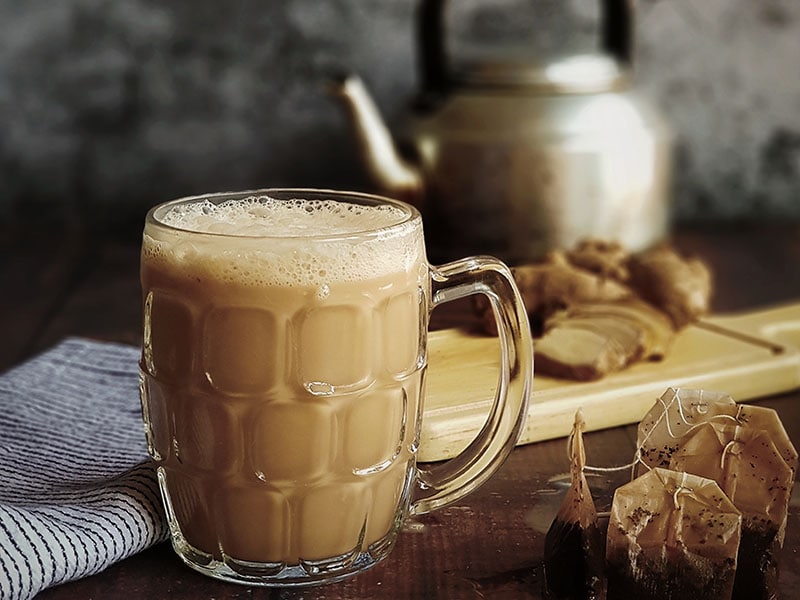
Teh Tarik is a famous national drink in Indonesia, Malaysia, Singapore, Thailand, and other Southeast Asian countries. You can stumble on it at any makeshift stall or restaurant along the streets.
Regarding Teh Tarik’s origin, in the Malay Peninsula, Indian Muslim immigrants opened drink stalls at the entrance of the rubber plantations to serve the workers there. Besides, the beverage has gained popularity in British Malaya and Singapore since colonial times.
Teh Tarik means “pulled tea” in English, which also presents a unique technique in its making process: Malaysians will pour the mixture (strong brew of black tea and condensed milk) up and down repeatedly between two containers from around 1m (3 feet) high.
This action will cool down a brew of hot tea to an ideal temperature, level up the flavor, and combine the mixture perfectly. Thereby, you can achieve a thick and rich frothy on top with an extraordinary bittersweet flavor.
If you wonder whether Teh Tarik contains caffeine, the answer is yes. Teh Tarik is made of black tea with a natural source of caffeine, but it is lower than typical coffee.
This one has several variations, such as Teh Ais, Teh Madras, Teh Tarik Madu, etc. You can serve the drink hot or add some ice cubes to make it cold.
Where to buy: Restaurants, outdoor stalls, Mamaks (indoor and open-air food establishments), and Kopitiams (coffee shops) in Malaysia.
6. Bandung (Rose Syrup Milk)
Non-alcoholic
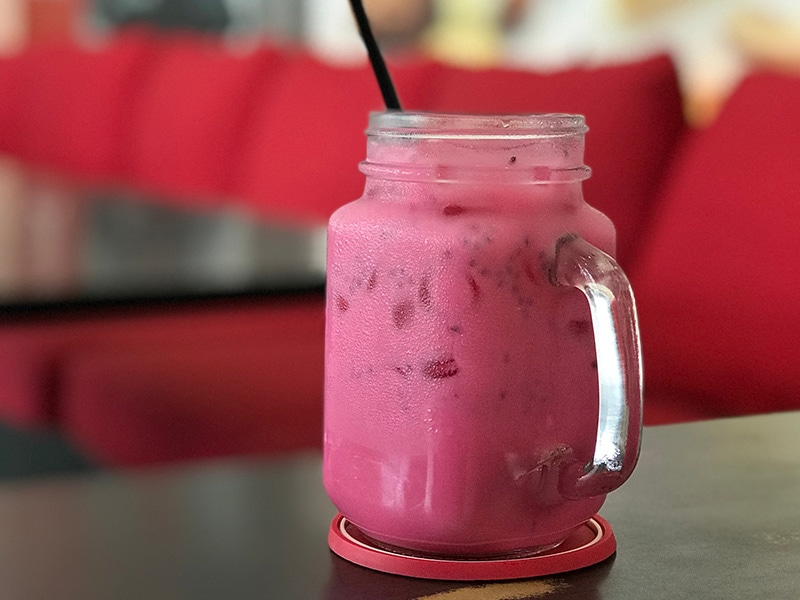
Bandung is another popular drink you might encounter while walking on Malaysian streets. My kiddos give it an A-plus for the beautiful color and flavor. Even I, an adult, also fell in love with this one like crazy!
Well, Bandung is the name of a city in Indonesia, yet no misunderstanding that the drink has relation to that city.
Indeed, this concoction is from Malaysia and is also popular in Brunei and Singapore. Besides, Indonesia has a similar drink under the name “Soda Gembira”.
You can call this pink drink by several names, including Sirap Bandung, Air Bandung, or Iced Bandung. “Bandung” refers to pairs; meanwhile, “sirap” indicates syrup, and “air” is literally water in Malaysian words.
The Bandung’s ingredients are very simple and easy to prepare. You will need evaporated milk (or condensed milk), water, and rose syrup, which is the main character of the drink.
Overall, Bandung will deliver a creamy, sweet flavor and a tinge of rose. People usually serve Bandung during Ramadan or as a greeting drink at weddings with other culinaries (Nasi Beriani and Rendang are the best options).
Where to buy: Take-away stores, makeshift stalls, or restaurants in Malaysia.
7. Ipoh White Coffee
Non-alcoholic
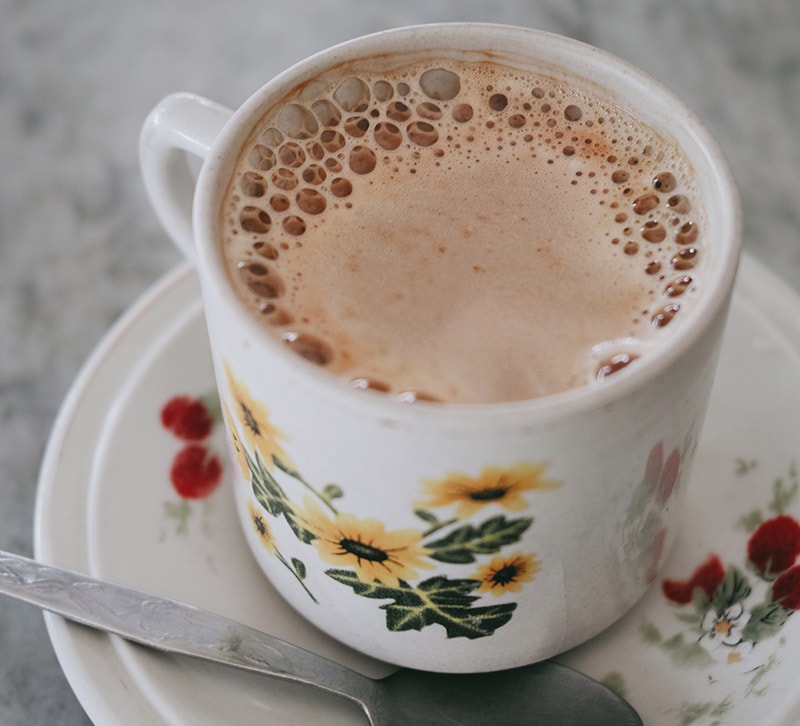
Coffee appears in various Southeast Asian drinks, from flavorful Vietnamese beverages to Indonesian delight. But if you are a coffee lover seeking something new, Ipoh white coffee is a wonderful experience. Try a sip, and then you will immediately want it to be your daily morning coffee.
In the 19th century (during the British colonial era), Chinese immigrants came to the Ipoh Old Town to work in the local tin mines.
They adjusted the ingredients from the bitter western coffee and created a new version that was more pleasant to taste, Ipoh white coffee. Since then, this coffee has been an iconic drink that appears in almost every household and coffee shop in Ipoh, Perak, Malaysia.
At first glance, you may think that people call it “white coffee” because the coffee has a white color. The name was basically a misunderstanding as the coffee has a caramel brown with slight froth.
Regarding the traditional Malaysian-style coffee (Kopi-O), people will apply the roasting process with sugar, margarine (a plant-based butter), and wheat. Meanwhile, white coffee only requires margarine when roasted.
Thanks to the unique method, the coffee will deliver an aromatic odor that can give out all the corners of the Malaysian streets. Ipoh coffee will offer a sweet, rich, and a bit bitter taste. You can serve a cup with a spoon to sip up the foam on top.
Where to buy: Coffee shops and restaurants in Malaysia.
Follow this information provider to have a deep understanding of Ipoh white coffee.
8. Nutmeg Juice
Non-alcoholic
I’m a big fan of juice! I’ve tried out so many glasses, and none of them disappoints me. Therefore, today I want to introduce nutmeg juice, the drink embraced in Malaysia’s diversified culture, my favorite above all!
Nutmeg, a native seed in Indonesia, has an egg shape with a yellow-brown peel and white to pale yellow flesh inside. Regarding health benefits, nutmeg helps to improve blood sugar control, support your heart, and perk up your mood.
Nutmeg juice will deliver a woody, nutty, tangy, and sweet mouthfeel with a hint of bitter and grassy taste. Its color can range from white, pale yellow to light green-yellow depending on the nutmeg’s flesh.
Malaysians also boil the nutmeg juice to achieve a sweeter version drink with brown color. Besides, they often garnish the juice with Chinese sour plums. I’ve tried this, and it turns out so great beyond my expectation!
Where to buy: Restaurants and wet markets in Malaysia.
9. Milo Ais (Milo Dinosaur)
Non-alcoholic
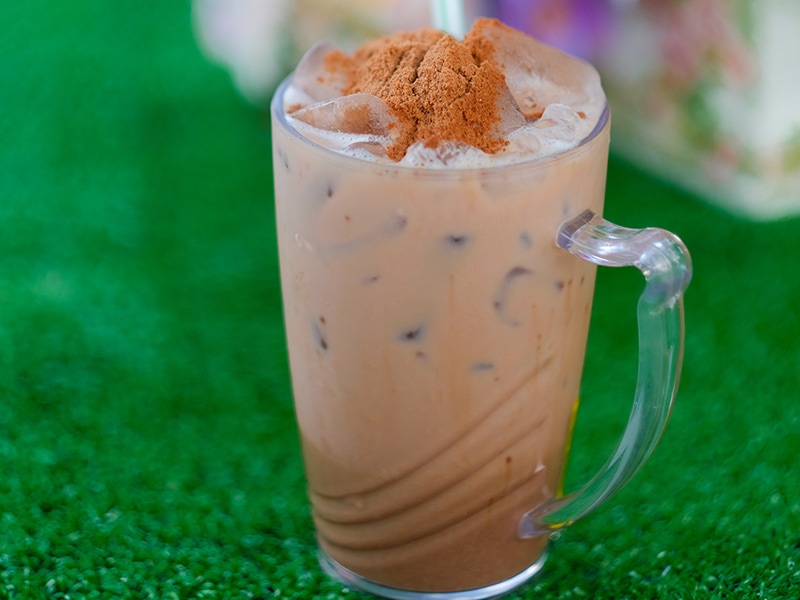
Milo Ais is a fabulous Malaysian drink containing the Milo liquid with Milo powder on top. Every time I make Milo Ais, my kiddos spend only five minutes finishing the cup in grande size. That’s enough proof that it’s delicious!
In Malaysia, you may find another drink named Milo shake since the locals have sold it since the mid-1990s. However, this Milo shake was completely different from the Milo Ais as it’s less creamy and chocolate.
Besides, you might stumble on another variation of the Milo Dinosaur, Milo Godzilla (sounds interesting, right!). With this version, you need to add a scoop of optional ice cream or whipped cream into a glass of Milo Ais.
Also, if you want your beverage to be embraced in chocolate taste, you can add cocoa powder. Besides, this drink is the best when combined with Roti Prata.
Where to buy: Roadside stalls on Malaysia streets.
I’m sure your kids will be addicted to Milo Ais!
10. Teh Halia (Ginger Milk Tea)
Non-alcoholic
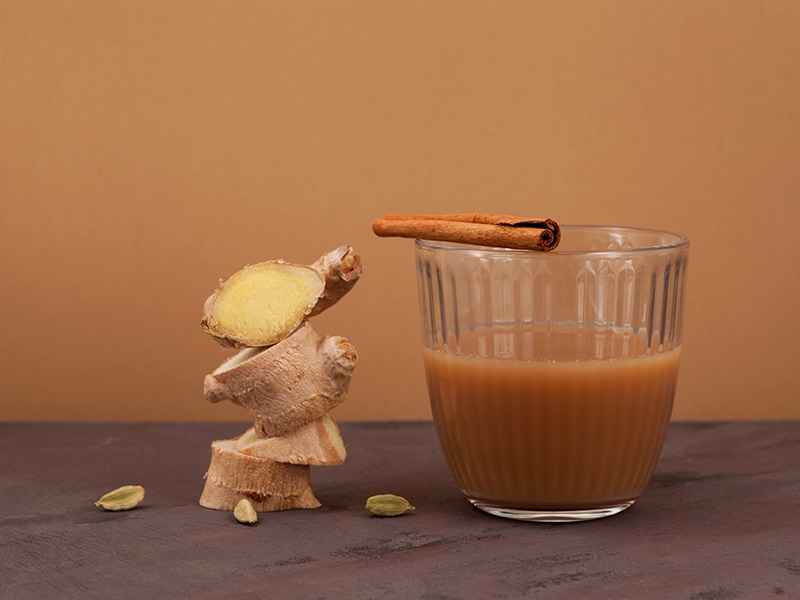
For me, winter is a cozy time when I have enough hot beverages with an amazing taste to warm my heart. Today, I will introduce you to one such delight: Teh Halia. It is a creative take on the iconic taste of tea to make this beverage more suitable for the season.
Ginger is a traditional herbal remedy throughout East Asia, South Asia, Southeast Asia, and West Asia. Usually, people use ginger root to make the drink, and this Malaysia-style ginger tea is no different.
But one extraordinary thing about Teh Halia is that Malaysians will add optional milk (you can use low-fat or coconut milk). This little trick can add creamy and fatty to your spicy and sweet Teh Halia.
This drink includes not only pure ginger tea but also brewed black tea, sugar (optional), milk, or condensed milk. The cup is served popularly in Malaysia and Singapore with the name Teh Tarik Halia or Teh Susu Halia.
If you are a fan of the Teh Tarik’s froth from Malaysia, you can completely apply the technique to this ginger tea. As a result, the tea will appear beautifully with tiny light bubbles on top of the velvet hot brown liquid.
Besides, one cup of pure ginger tea (or this delicious ginger tea version) daily can give you many health benefits.
Where to buy: Malaysian restaurants.
11. Soya Cincau
Non-alcoholic

When I traveled to Malaysia and stumbled upon this Cincau drink, I couldn’t help but keep asking the owners how they could make this incredible drink! And I’m not a selfish lady, so I’ll share everything I know about this beverage.
These jelly-like cubes are known as leaf jelly, a famous product consumed largely in East and Southeast Asia. This grass jelly has a Chinese mesona as the main element combined with other ingredients, including corn starch and potassium carbonate.
Soya Cincau also has another name which is Michael Jackson. Based on some sources, the term might refer to the changing skin color due to the disease of Michael Jackson or his song Black and White.
Cincau is usually served with various tasty Malaysian fruits, bubble tea, or add it in optional drinks. Malaysians often use Cincau not only in this Soya Cincau but also in Ais Kacang and Cendol.
The drink will provide a fresh glass with a herbal flavor and a slightly bitter aftertaste of these Cincau cubes imbibed in mild and creamy soy milk.
Where to buy: Roadside cafes and street stalls in Malaysia.
No denying that Soya Cincau will be your next favorite beverage!.
Some Exotic Recipes To Make Iconic Beverages In Malaysia
In case you can’t be able to get to Malaysia, I’ve stored some wonderful recipes for you to make your own. Let’s start with Teh Tarik, the sweet milk tea with a beautiful thick froth on top.
1. Making Teh Tarik

Teh Tarik is delicious, quick, and inexpensive, and the ingredients appear in all the supermarkets. Pay a little attention to the pouring process, and you have a pro milk tea!
Ingredients: Boiling water, black tea bags, condensed milk, ice.
Step 1: Pour boiling water into tea bags, wait until the tea is dark and intense, and then let it cool for a few minutes.
Step 2: Add condensed milk and stir well.
Step 3: Carefully pour the tea into a stainless steel cup, then pour it into a glass, and pour it back again into the stainless steel cup. Repeat when the tea reaches the frothy that you desired.
Step 4: Add ice if you want to enjoy the fresh and cool drink.
2. Making Bandung
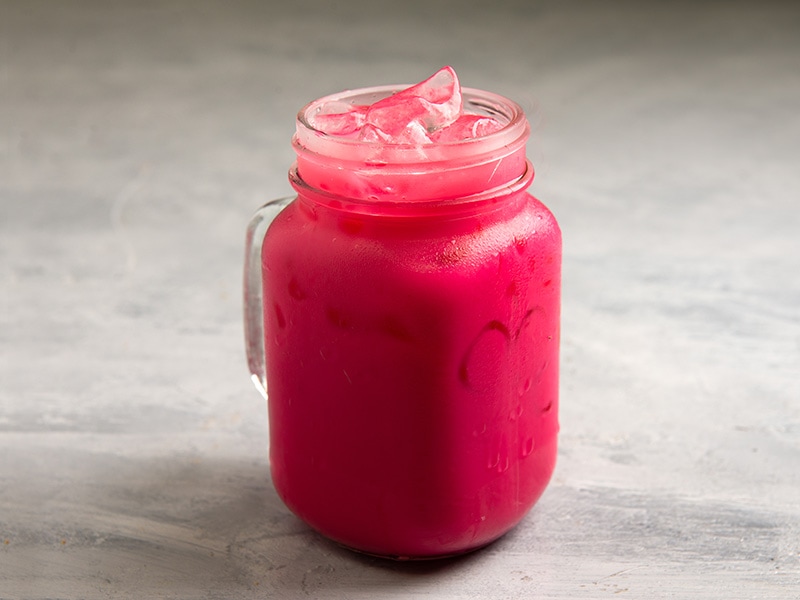
Bandung is another quick glass of beverage that you can’t miss in this boiling summer. It’s not only for kiddos but also for adults. Bandung is a gathering drink when it can bring everyone to the table.
Ingredients: Water, evaporated milk, rose syrup.
Step 1: Combine the rose syrup with water and stir well.
Step 2: Add the evaporated milk, and keep stirring until the spoon is clean.
Step 3: Add ice cubes and enjoy.
Want to know more about how to make Bandung? Let’s jump right into it!
In A Nutshell, What Do You Think About These Malaysian Drinks?
After reading the post, do you have a thought that you will reschedule the plan to travel to Malaysia as soon as possible? If yes, that will be a wonderful tour.
Still, if you don’t have enough savings, you can grab the ingredients at the markets and make one yourself. The drink will turn out delicious and beautiful as you follow the detailed recipe enclosed.
One more important thing, if you find this article helpful, don’t forget to share it with anyone who needs this information. Also, you can freely leave the comment below to inform me about any new Malaysian drink ideas. Thank you!
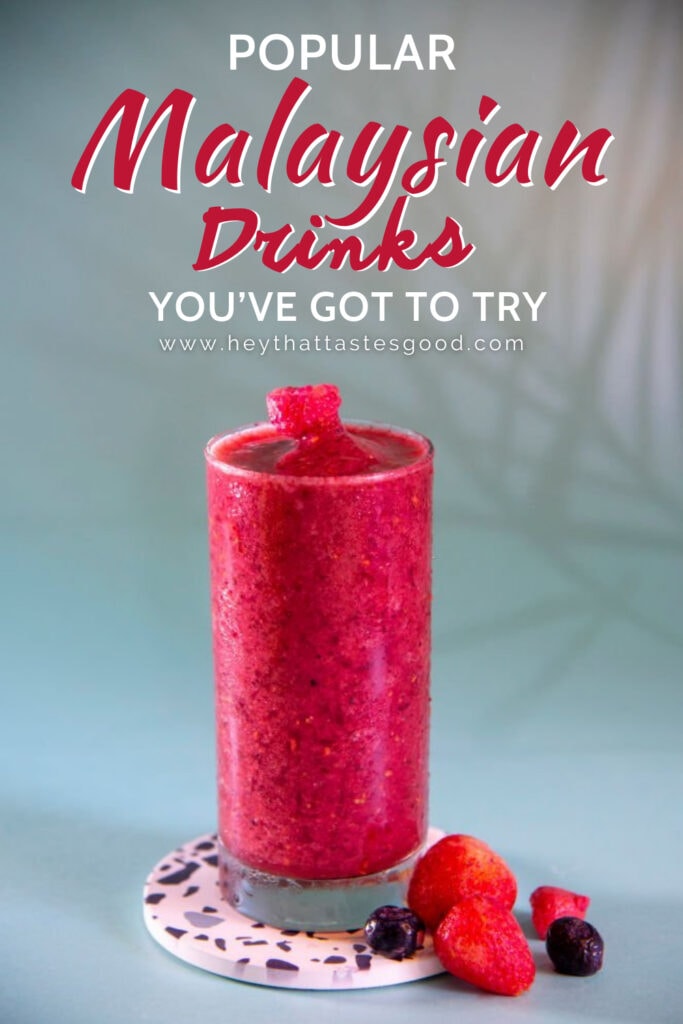


Truc Tran (Kris)
Expertise
Home Cooking, Meal Planning, Recipe Development, Baking and Pastry, Food Editor, Cooking-video Maker, Asian Food Content Creator, Vietnamese Food Evaluation Expert
Education
Program: Diploma of Hospitality (Commercial Cookery)
Focus: The culinary program included a Certificate III in Commercial Cookery, a Certificate IV in Kitchen Management, and a Diploma of Hospitality Management. This education provided a comprehensive blend of theoretical and practical training in finance, sustainability, diversity, and human resources management.
Program: Culinary Arts at Kendall College (Australia Branch in Sydney)
Focus: Explored global cuisines, and developed entrepreneurial abilities to manage a successful food business, along with acquiring essential language, math, computer, and communication skills for success.
Program: Certificate of Vietnamese Cuisine Head Chef
Focus: Master traditional and modern Vietnamese cooking techniques.
Truc Tran, or Kris, is an accomplished food editor with extensive training in hospitality and culinary arts, including a deep focus on Vietnamese cuisine from various prestigious institutions. She possesses over nine years of experience, developing her expertise in global cuisines and blending traditional Vietnamese cooking with contemporary trends to create engaging and educational content.
She also has a rich educational background, including a Diploma of Hospitality from TasTAFE and a Bachelor of Arts in Culinary Arts from Kendall College’s Sydney branch. It enables her to offer unique insights into meal planning, recipe development, and food culture, making her articles and cooking videos both informative and appealing.